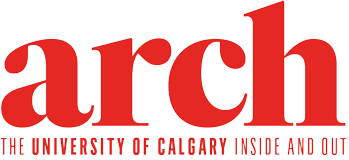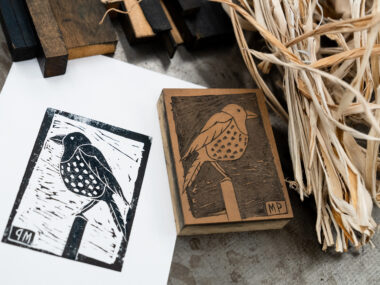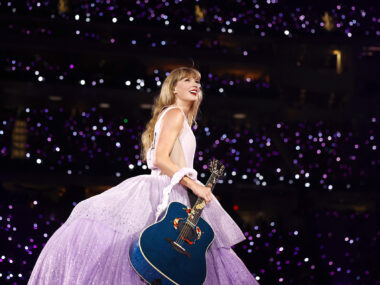Written by Sean Myers, BA’94
Parents and educators in the Fort Vermillion School Division (FVSD) are changing the future for their children. Their kids attend schools participating in a comprehensive community-based research initiative led by Dr. Jennifer Markides, MEd’13, PhD’20. Her goal is ambitious: to reset the relationship with Indigenous communities in the sprawling school jurisdiction — geographically the size of New Brunswick — to give Indigenous students every opportunity for success, both in school and beyond.
Parents Jonelle Laboucane and Wendy McLean are both Cree, with residential school survivors in their family histories.

“If our great grandparents or even our grandparents could see what is happening in these schools, I just imagine how they would feel,” says Laboucane. “When you think of the residential schools — they were forced to learn other ways. Everything about their lives was changed in a school, but we’re bringing it back. Everything that was taken from them, we’re bringing it back.”
Both Laboucane and McLean are employed by the FVSD as student success and engagement coaches and are working alongside Markides, whose research funding comes as part of the University of Calgary-led One Child Every Child initiative. It received $125 million in funding from the Canada First Research Excellence Fund earlier in 2023. One Child Every Child is a massive research undertaking to address Canada’s deteriorating child health and wellness outcomes after UNICEF ranked Canada 30th out of 38 wealthy countries on these metrics in 2020. One Child Every Child brings together 132 organizations across 25 countries to work toward ensuring Canadian kids are among the healthiest, most-empowered and thriving in the world. Investment from partners including the Alberta Children’s Hospital Foundation, the Azrieli Foundation, UNICEF Canada and Children’s Healthcare Canada have brought total research support for the project to $268 million.
Walking Parallel Paths
The scope is enormous. One of the biggest challenges faced by One Child Every Child is how to dismantle embedded inequities between Indigenous and non-Indigenous people to help transform vulnerable populations so they can thrive. This is where UCalgary’s approach to its Indigenous Strategy, ii’ taa’poh’to’p, comes into play with its commitment to walk parallel paths with Indigenous communities.
Breaking down barriers to success for Indigenous children is a key educational outcome for Markides, a member of the Métis Nation of Alberta and an assistant professor in curriculum and learning with UCalgary’s Werklund School of Education and Faculty of Social Work, as well as a child and health wellness researcher with the Alberta Children’s Hospital Research Institute at the Cumming School of Medicine. Her approach was to start at the beginning and ask the communities and, more importantly, the students themselves: What do you want?

To that end, Markides has been laying the groundwork in the Fort Vermillion and Grand Prairie regions for nearly three years, building relationships with Indigenous communities, school divisions, families and students. She has been tireless in meeting with people where they live, work and learn; asking them what they want to see in the education system and then delivering on promises. So, when the funding came through in the spring of 2023, she was able to hit the ground running.
“What’s great about working in partnership with the school divisions and the community leadership is we’re able to work together and put things into action. It’s not just research for research; we’re actually making change,” says Markides. “With education, it takes time to make big change. The things we do to create a stronger sense of self in youth, a strong cultural identity and pride, and a sense of direction for the things they want to do in life during their school years and after high school. It has such a positive effect in all the other areas like health and well-being. Being able to make their own way in society and being contributing members in their communities.
“Having that confidence and support in their educational years has so many downstream effects, long-term.”

FVSD Superintendent Mike McMann agrees, which is why he and the school division are fully on board, not just with the research initiative, but with fundamentally and permanently reshaping their education system based on this work.
“The biggest success we can have is that we help create an individual who is compassionate, a critical thinker, and who feels and knows they live for a bigger purpose,” says McMann. “That purpose might come from their ancestors, their nation or their community, but, if we do that well, the rest of it happens — they graduate, they know how to read, they know how to do math, and they can step into the world with confidence. But, if we don’t do those other pieces, none of the rest of it happens.”
Indigenous Curriculum Matters
Markides’ initiative tackles three main areas: language-revitalization, cultural teachings and land-based learning. Two full-time language teachers have already been hired, one teaching Cree and the other Beaver — the two main languages spoken by Indigenous communities within the school division. They will be based at the first two schools participating in Markides’ work, Rocky Lane (K-12) and Fort Vermillion Public School (Grades 7-12), both located in the region about 825 km north of Calgary. Markides was able to top up the salaries for these positions making it possible for the division to hire full-time teachers.
“Something that came out in almost every one of (Markides’) interviews with youth and the families was that they would love to have more language embedded in the school practice and, because of that and the grant funding Jennifer has been able to access, we have two language instructors we didn’t have before,” says Natalie Morris, supervisor of Learning Services responsible for Connectivity at FVSD.
Morris is responsible for the mental-health supports for students and staff throughout the division. She says some youth in the division have demonstrated the social and mental-health issues that can come with disaffected children detached from a sense of who they are and where they came from. Substance abuse, self-harming behaviour, suicidal ideations and a range of mental-health concerns are all present in the communities within the school jurisdiction. But Morris says she’s already seeing positive impacts from Markides’ work.
“I can’t say attendance has improved by X per cent because of this relationship, but I can say the involvement and engagement in the process has improved,” says Morris. “And I think that’s a huge step in the right direction, because I do believe everything else falls into place when you have strong healthy relationships built on trust.”
“It’s empowering for a youth to have spoken with Jen and said, this is what I would like my experience in school to look like, and then see change happen quickly. It’s pretty remarkable. This will be embedded practice. It’s going to be something that will continue on long after the research is done because it will be an expectation of our communities that these services are provided. And that really excites me.”
McLean, a mother of six living in Fort Vermillion, sees the change in her own family.

“Having the support of the division is huge,” says McLean. “Having our beautiful culture and language consistently present is making a difference. My own daughters are beading now and they love it. A lot of the kids here, when we say we’re going to be beading, they just pick up their things and they come and start beading. They’ve also been making ribbon skirts and they’re sewing, there’s a lot of great things happening. None of this was happening when I was in school.”
Sharing Cultures Benefits All Students
While 90 per cent of students in the schools are Indigenous, the programming isn’t only for them. Non-Indigenous students learn from this, as well.
“We only partner with researchers that are pedagogically going to change us in practice for the better of all students,” says McMann. “We’re not just talking about First Nations students; we have tons of kids who need to know their own history and know First Nations history. They all need to learn how this area of the province came to be.”
McMann says the main cultural groups that make up the communities in the school division include Cree, Beaver, Dene, Métis, Filipino and Mennonite. The school division had a professional development day for staff last year that brought together Elders from each of those cultural communities.

“We asked them: what are two of the most important things in your culture that is explicit and vital in everything you do?” says McMann. “Every one of them said family and faith. It might have been the first time some of our employees heard that and realized that people aren’t as far apart as we think they are. But we don’t talk about it, we don’t share our cultures with each other, so that’s when they become really far apart.”
A New Approach to Generate New Outcomes
This work is just one aspect of Indigenous health and well-being that is being addressed by the One Child Every Child initiative. Other areas of focus include Indigenous maternal child health, educating health providers on working with Indigenous populations, and primary health care for Indigenous patients.
Dr. Michael Hart, PhD, UCalgary’s vice-provost of Indigenous Engagement, is a co-lead on One Child Every Child. His research is focused on social determinants of health in Indigenous children and youth, and the incorporation of traditional practices for supporting Indigenous children, youth and the two-spirited community.
Hart says Markides’ research reflects a new approach being undertaken by the broader One Child initiative.
“In the past, it’s either been that Indigenous peoples are incorporated into research without attention to what Indigenous people are saying or doing or aspiring to be, or that it would be a totally separate research project. Not only are we attending to all populations, we are also addressing specific measures identified by Indigenous people about what health and well-being means for them,” says Hart. “Developing these indicators of health and well-being from a nation-specific perspective — that’s all brand-new.”
Markides’ work is already reaching beyond Fort Vermillion with other school divisions having recently begun parallel research programs. There is also potential to expand this model for use in school divisions across the country. Over the seven-year term of this project, Markides and her team will work with hundreds of students.
“I get to live my dream every day in this work,” says Markides. “It feels so meaningful; we’re seeing the impact already. The community is excited, the partnerships are stronger between the school divisions and the First Nations and Métis leadership because we are working together to determine the direction of things. It’s creating a lot of hope.”




